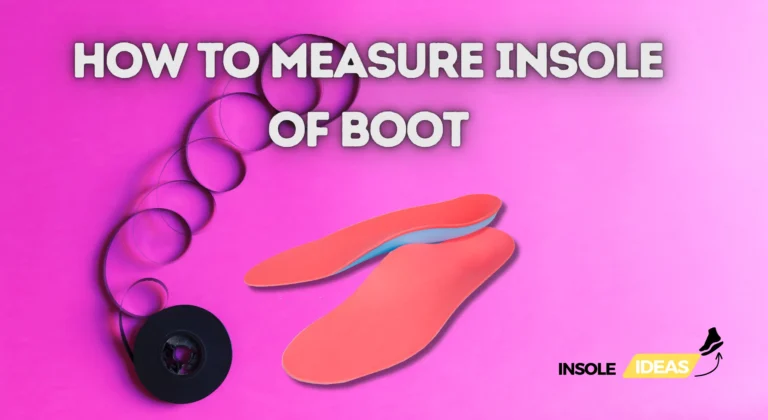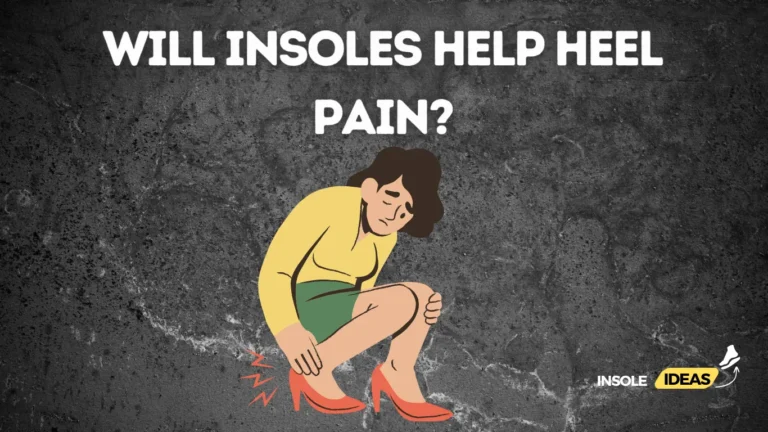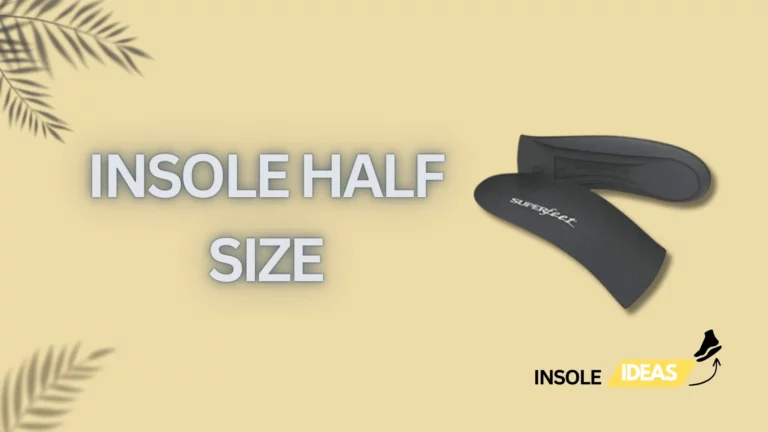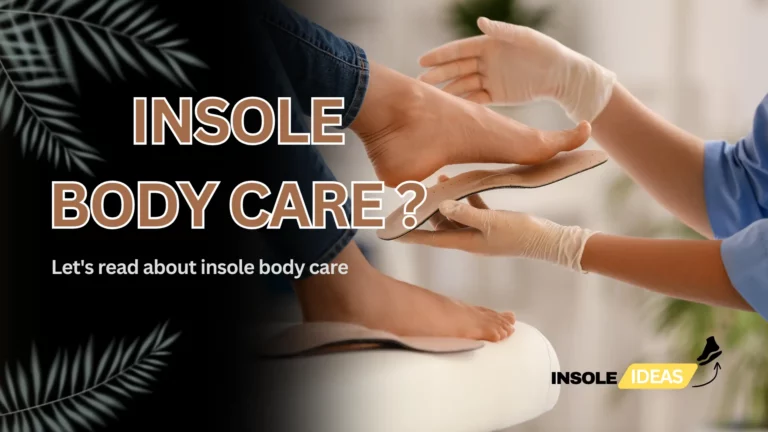Unveiling the Mystery: Do Insoles Belong in or Out?
Introduction
In the realm of footwear, the discussion surrounding the placement of insoles has sparked a considerable amount of controversy. Before delving into the intricacies of this debate, let’s first establish a basic understanding of what insoles are and why they are a focal point in the footwear industry.
A. Brief Overview of Insoles
Insoles, also known as footbeds or inner soles, are inserts placed inside shoes to provide additional support, cushioning, and comfort. These inserts can be made from various materials, including foam, gel, or specialized orthotic materials. Their main purpose is to alleviate some foot-related issues and to improve the overall shoe-wearing experience.
B. The Controversy: In or Out?
Support and Comfort
One of the primary roles of insoles is to provide additional support to the feet. This support can be crucial, especially for individuals with conditions such as flat feet or high arches. By distributing body weight more evenly, insoles can relieve pain and lessen pressure on certain foot regions.
2. Alignment and Posture
In addition to support, insoles contribute to proper alignment and posture. They can help align the foot, ankle, and lower leg, reducing the risk of overpronation or supination. By promoting better alignment, insoles play a vital role in preventing foot-related issues and enhancing overall body posture.
Insoles in Different Shoes
A. Athletic Shoes
Insoles are essential for improving performance and lessening the impact on the feet throughout a variety of activities when it comes to sports footwear. Insoles designed for athletic shoes often prioritize shock absorption, arch support, and stability. Athletes and fitness enthusiasts benefit from the added cushioning and support, contributing to better endurance and reduced fatigue.
B. Casual Shoes
Casual shoes, worn for everyday activities, may or may not come with built-in insoles. The choice often depends on the design and purpose of the shoes. Insoles in casual shoes can provide extra comfort for prolonged wear, making them popular among those who prioritize day-long comfort without compromising style.
C. Work Boots
In work boots, insoles are frequently integrated during manufacturing to address the demands of various professions. These insoles prioritize safety, durability, and support, catering to individuals who spend extended hours on their feet in challenging environments. The right insoles in work boots can contribute significantly to foot health and overall job performance.
D. High Heels
The inclusion or exclusion of insoles in high heels is often a matter of personal preference. While some argue that insoles can mitigate the discomfort associated with high heels by providing additional padding and support, others may find them impractical due to limited space in these types of shoes. The decision often depends on individual comfort needs and the design of the high heels.
Pros and Cons of Keeping Insoles In
A. Benefits
1. Enhanced Comfort
Keeping insoles in your shoes can significantly enhance overall comfort. The additional cushioning and support they provide can alleviate pressure points, reduce fatigue, and contribute to a more enjoyable walking experience.
2. Improved Support
Insoles are designed to offer support to different areas of the feet. By keeping them in your shoes, you promote better alignment, reduce the risk of foot-related issues, and improve overall support for your feet.
B. Drawbacks
1. Limited Shoe Space
One drawback of keeping insoles in your shoes is the potential reduction in available space. This can be a concern, especially in snug-fitting shoes, as the additional thickness of the insoles may lead to a tighter fit.
2. Hygiene Concerns
Over time, insoles can accumulate sweat and odor. Keeping them in your shoes may pose hygiene challenges, requiring regular cleaning to maintain a fresh and healthy environment for your feet.
Pros and Cons of Taking Insoles Out
A. Benefits
1. Increased Shoe Space
Removing insoles creates additional space inside the shoes, offering more room for your feet. This may be helpful, particularly for people who want a looser fit or have bigger feet.
2. Easier Cleaning
Without insoles, cleaning the interior of your shoes becomes simpler. You can easily wipe down or wash the entire shoe, minimizing the risk of bacterial or fungal growth.
B. Drawbacks
1. Reduced Support
One notable drawback of taking insoles out is the potential reduction in foot support. The insoles are specifically designed to enhance comfort and support, and their absence may lead to increased strain on the feet, especially during prolonged periods of standing or walking.
2. Comfort Sacrifice
While removing insoles may create more space, it can result in a sacrifice of comfort. The padding and support provided by insoles contribute significantly to the overall comfort of the shoes, and without them, the footwear may feel less cushioned and supportive.
The Fit Factor
A. Insoles and Shoe Size
A shoe’s fit is a major determinant of its overall comfort, and attaining the ideal fit is made possible in large part by insoles. While standard shoe sizes are used in the manufacturing process, individual foot anatomy and preferences can vary. Insoles can help fine-tune the fit by adding or reducing volume inside the shoe. It’s essential to consider the interaction between insoles and shoe size to ensure optimal comfort and support.
B. Custom Insoles for Perfect Fit
Custom insoles provide a customized option for individuals looking for the utmost in individualized comfort. Custom insoles are crafted to match the unique contours of an individual’s feet, providing a perfect fit that addresses specific support and comfort needs. Those who have foot problems or spend a lot of time on their feet would especially benefit from these insoles. Investing in custom insoles can lead to enhanced comfort and a more enjoyable walking or standing experience.
Common Myths Debunked
A. Insoles Are One-Size-Fits-All
One prevalent myth about insoles is the belief that they are one-size-fits-all. In reality, this is far from the truth. Standard insoles may come in various sizes, but the diversity of foot shapes and arch types requires a more nuanced approach. Customizing insoles to match individual foot characteristics ensures proper support and comfort, debunking the notion that a universal size can cater to everyone’s needs.
B. “Insoles Last Forever”
Another common misconception is that insoles are indestructible and last indefinitely. In reality, the lifespan of insoles depends on factors such as usage, material quality, and maintenance. Over time, insoles can lose their cushioning and support properties, especially with regular wear. It’s important to recognize the wear and tear on insoles and replace them when necessary to maintain optimal foot support and overall shoe performance.
The Science Behind Insoles
A. Biomechanics of Insoles
The science behind insoles delves into biomechanics, examining how these shoe inserts interact with the complex structure and movement of the human foot. In order to avoid problems like overpronation or supination, biomechanically constructed insoles work to maximize the natural alignment of the foot, ankle, and lower leg. By understanding the biomechanics, manufacturers can create insoles that provide the right balance of support and flexibility for overall foot health.
B. Impact on Foot Health
The impact of insoles on foot health is profound and multifaceted. Well-designed insoles can alleviate stress on specific areas of the foot, reduce pressure points, and enhance overall comfort. They are also essential in treating or preventing a variety of foot diseases. The proper support from insoles contributes to improved posture, reduced fatigue, and a lower risk of developing long-term foot problems.
Insoles for Special Conditions
A. Plantar Fasciitis
Plantar fasciitis insoles are specifically designed to meet the demands of those who suffer from this excruciating ailment. These insoles often feature arch support, cushioning in the heel, and shock absorption to alleviate strain on the plantar fascia. By providing targeted support, these insoles can aid in managing symptoms and promoting the healing process for those with plantar fasciitis.
B. Flat Feet
Flat feet can lead to biomechanical imbalances, causing discomfort and increasing the risk of injuries. Arch support is frequently included in insoles made for flat feet in order to assist distribute weight evenly and offer stability. The goal is to reduce overpronation and support the natural arch of the foot, offering relief for individuals with flat feet.
C. High Arches
High arches can result in excessive pressure on the ball and heel of the foot. Insoles for high arches are engineered to provide additional cushioning and support in these specific areas. This targeted approach helps absorb shock, improve overall foot alignment, and enhance comfort for individuals with high arches.
Customization Options
A. Heat-Molded Insoles
Heat-molded insoles offer a personalized fit by using heat to mold the insole to the unique contours of an individual’s feet. This customization enhances comfort and support, addressing specific pressure points and arch characteristics. Heat-molded insoles are particularly beneficial for those seeking a tailored solution without the need for fully custom insoles.
B. 3D-Printed Insoles
Advancements in technology have led to the development of 3D-printed insoles, allowing for precise customization based on individual foot scans. These insoles are made layer by layer, so when they’re finished, they precisely match the individual foot anatomy of the wearer. 3D-printed insoles represent a cutting-edge option for those seeking the highest level of customization.
Sustainability in Insole Production
A. Eco-friendly Materials
Sustainability in insole production involves the use of eco-friendly materials. Manufacturers are increasingly turning to recycled or biodegradable materials to reduce environmental impact. These materials not only contribute to sustainability but also provide a responsible option for consumers concerned about the ecological footprint of their footwear accessories.
B. Recycling Initiatives
Some insole manufacturers are implementing recycling initiatives to minimize waste. These programs allow consumers to return old or worn-out insoles for recycling, preventing them from ending up in landfills. By promoting a circular economy, recycling initiatives contribute to the overall sustainability of insole production and consumption.
Yes, wash by hand according to the manufacturer’s instructions using a little soap and water. Thoroughly air-dry before re-inserting.
Examine the care directions; certain items may be gently machine washed, while others might break down. Review the advice provided by the manufacturer.
Every couple weeks or whenever smells appear, clean. Individual frequency is determined by usage and taste. Keeping insoles clean increases their longevity.
Sprinkle with baking soda, then let it overnight to draw moisture and eliminate smells. Continual prevention can be achieved by using antimicrobial sprays or insoles. Upkeep on a regular basis maintains insoles new.
Steer clear of it. Hand washing helps to protect fragile items. For gel or orthopaedic insoles to stay intact, adhere to the recommended maintenance guidelines.




